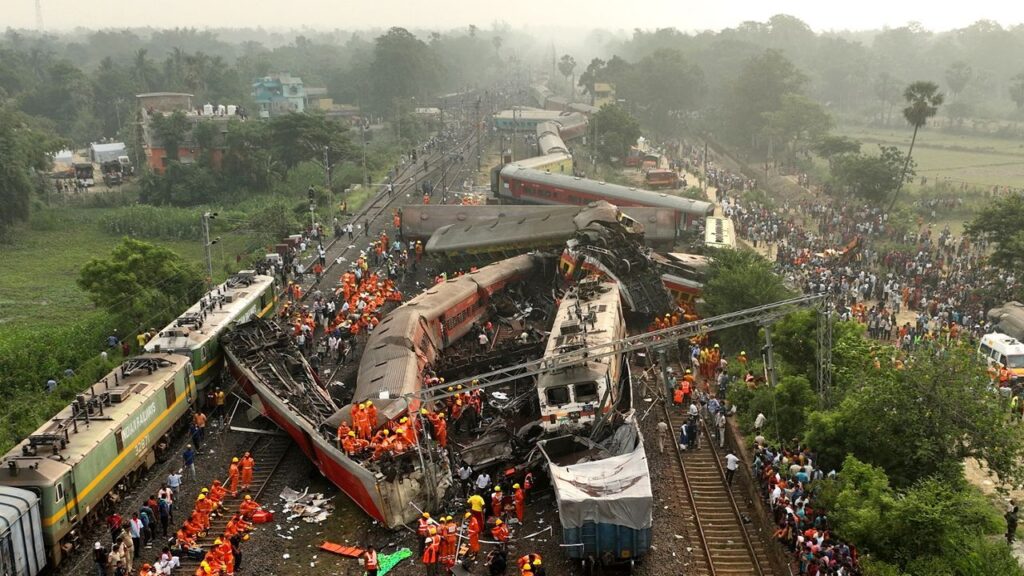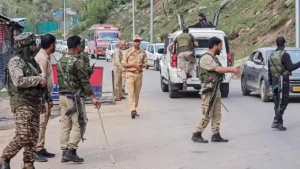The Gyaneshwari Express Accident: A Tragic Derailment that Shook India

The Gyaneshwari Express was involved in a tragic accident on May 28, 2010, which remains one of the most devastating train accidents in Indian railway history. The accident took place near Sardiha and Khemasuli stations in the West Midnapore district of West Bengal. The incident resulted in the loss of over 140 lives and left hundreds more injured, making it a major catastrophe for Indian Railways and the country as a whole.
Details of the Accident
The Gyaneshwari Express (train number 2810) was traveling from Mumbai Lokmanya Tilak Terminus (LTT) to Kolkata Shalimar, and was nearing the end of its journey when the tragedy struck. The train was derailed at around 1:00 AM on May 28, 2010, in a remote area between the Sardiha and Khemasuli stations.
The derailment occurred due to an obstruction on the track. It was later found that the train had been the victim of sabotage, with the tracks being intentionally loosened, leading to the derailment. The attackers had tampered with the rails, causing the train’s wheels to jump off the track, which resulted in several coaches overturning or plunging into a nearby field.
The train was traveling at high speed when the accident occurred, which further contributed to the severity of the incident. The sleeper coaches bore the brunt of the impact, with many passengers trapped inside the mangled wreckage. The train was also carrying a large number of daily commuters, and many of the victims were traveling overnight to reach their destinations.
Casualties and Injuries
The exact number of casualties varied depending on the sources, but it is estimated that at least 148 people were killed in the accident, and over 200 were injured. The vast majority of the injuries were critical, with many people suffering from fractures, head trauma, and severe internal injuries.
The rescue operations were launched immediately, with the Indian Army, West Bengal Police, and National Disaster Response Force (NDRF) teams deployed to the site. The accident site was difficult to reach due to the remote location, and the extent of the wreckage made the rescue operations challenging. Emergency teams worked through the night, using heavy machinery to extricate trapped passengers from the mangled train coaches.
The injured were rushed to nearby hospitals in Midnapore and Kolkata, where they received medical treatment. Many survivors were left in a state of shock, having witnessed the horrific events firsthand. The magnitude of the accident left deep emotional scars on those who survived.
Investigation and Cause
The cause of the Gyaneshwari Express accident was determined to be sabotage by Maoist insurgents. Investigations revealed that the rebels had loosened the tracks deliberately as part of their ongoing battle with the Indian government. The Maoists were active in the area, and it is believed that they were attempting to disrupt the transportation network to create chaos and draw attention to their cause.
The derailment of the Gyaneshwari Express was a part of a larger pattern of Maoist violence in the region, which had seen attacks on railway infrastructure, police stations, and government buildings. The Gyaneshwari Express attack was one of the most deadly and widely reported of such incidents, drawing national and international attention.
Indian Railways, along with law enforcement agencies, conducted an extensive investigation into the sabotage, and several Maoist operatives were arrested in connection with the incident. In the aftermath of the tragedy, there were calls for improved security measures on the railway network, especially in areas prone to insurgent activity.
Public and Government Response
The tragic incident sparked widespread outrage and grief across India. Prime Minister Manmohan Singh and West Bengal Chief Minister Mamata Banerjee expressed their condolences to the victims’ families and vowed to ensure that the perpetrators would be brought to justice. The tragedy also led to discussions about the vulnerabilities of India’s vast railway network and the need for enhanced safety and security measures.
Indian Railways faced criticism for not taking sufficient measures to safeguard trains traveling through regions with known security risks. In response, the Railway Ministry promised to enhance safety protocols, especially in areas that were known to be affected by Maoist insurgency. The government also made assurances regarding increased surveillance and intelligence gathering to prevent similar incidents in the future.
The accident also highlighted the need for improved infrastructure, especially in remote and vulnerable areas. Suggestions were made to install track monitoring systems, advanced signaling technology, and greater police presence on trains and at key railway stations to prevent sabotage.
Impact on the Gyaneshwari Express Service
In the wake of the tragedy, the Gyaneshwari Express resumed its services, but with increased security and operational changes. The incident had a profound impact on both passengers and railway staff. Many families of the victims continued to mourn their loved ones, and the horrific images from the crash scene remained etched in the minds of the public for years to come.
To this day, the Gyaneshwari Express derailment remains one of the most tragic and violent incidents in the history of Indian Railways, underscoring the vulnerabilities faced by the country’s extensive railway network, especially in areas with insurgent activity.
Legacy and Lessons Learned
The Gyaneshwari Express accident is a stark reminder of the dangers that trains face, especially in regions affected by conflict and insurgency. It also highlighted the importance of having effective intelligence and security measures in place to protect the vast network of trains that serve millions of passengers daily.
In the years since the tragedy, there have been several improvements to railway safety, including the introduction of modern track monitoring systems and enhanced security protocols. However, the scars left by the Gyaneshwari Express derailment continue to remind the public and authorities of the importance of vigilance and preparedness in preventing such disasters from happening again.
The Gyaneshwari Express accident remains one of the most devastating train crashes in India’s history, not only due to the loss of life but also because of the underlying factors of sabotage and insurgent violence. While the tragedy prompted reforms and enhanced security measures, it also exposed the risks and vulnerabilities of India’s railway infrastructure in conflict-prone regions.
As the country moves forward, it remains crucial to continue improving the safety, security, and resilience of the railway network to ensure that such a devastating incident is never repeated



